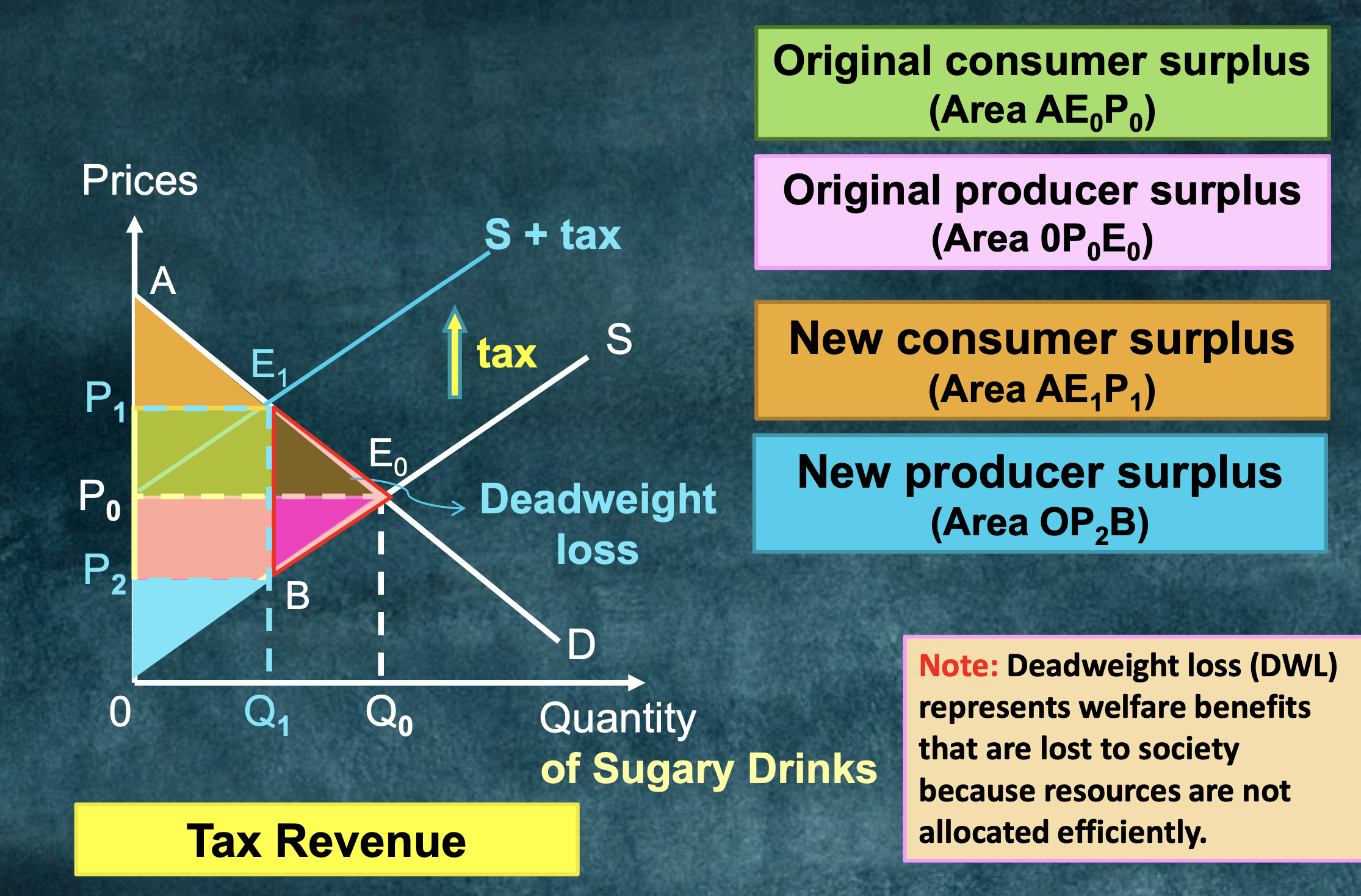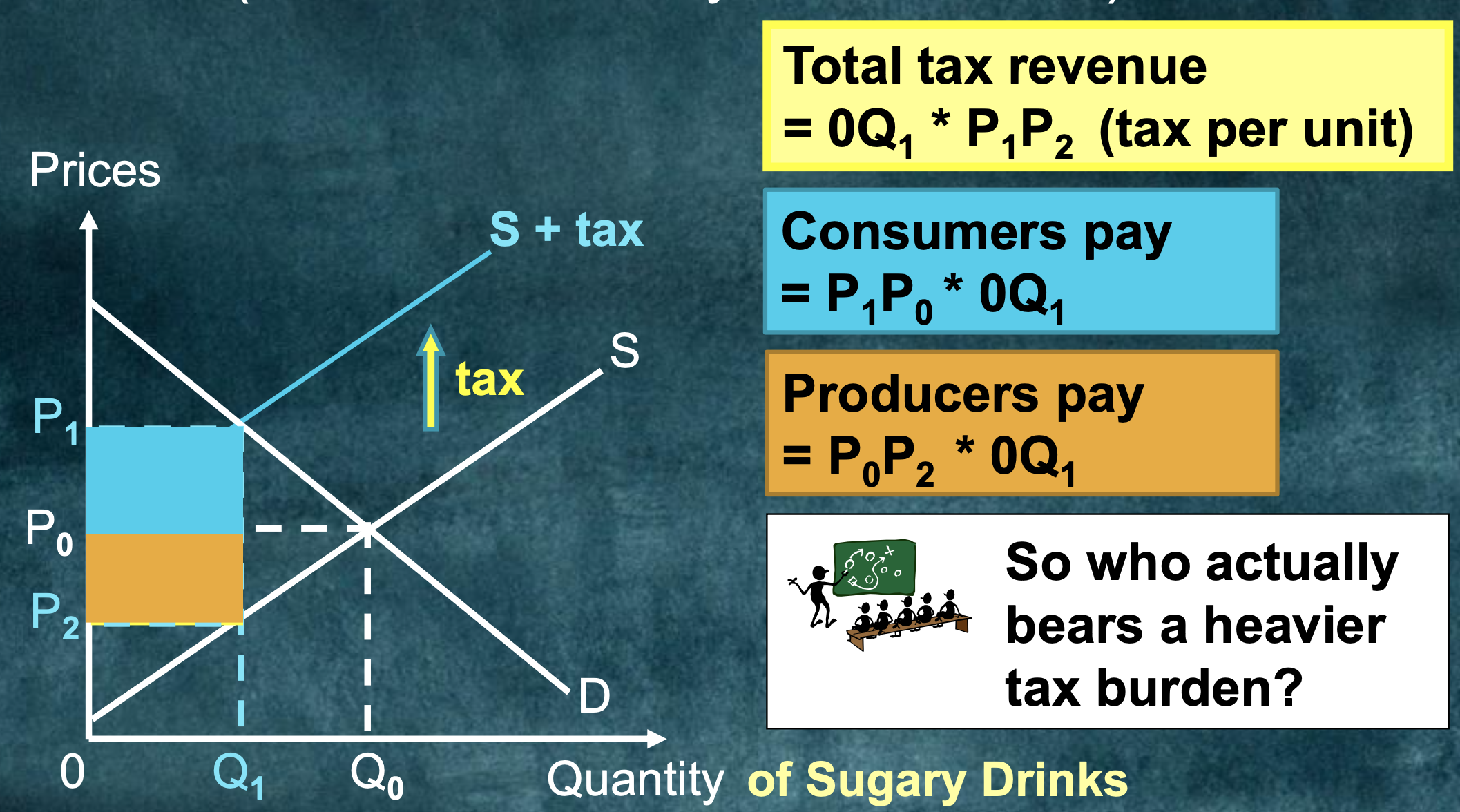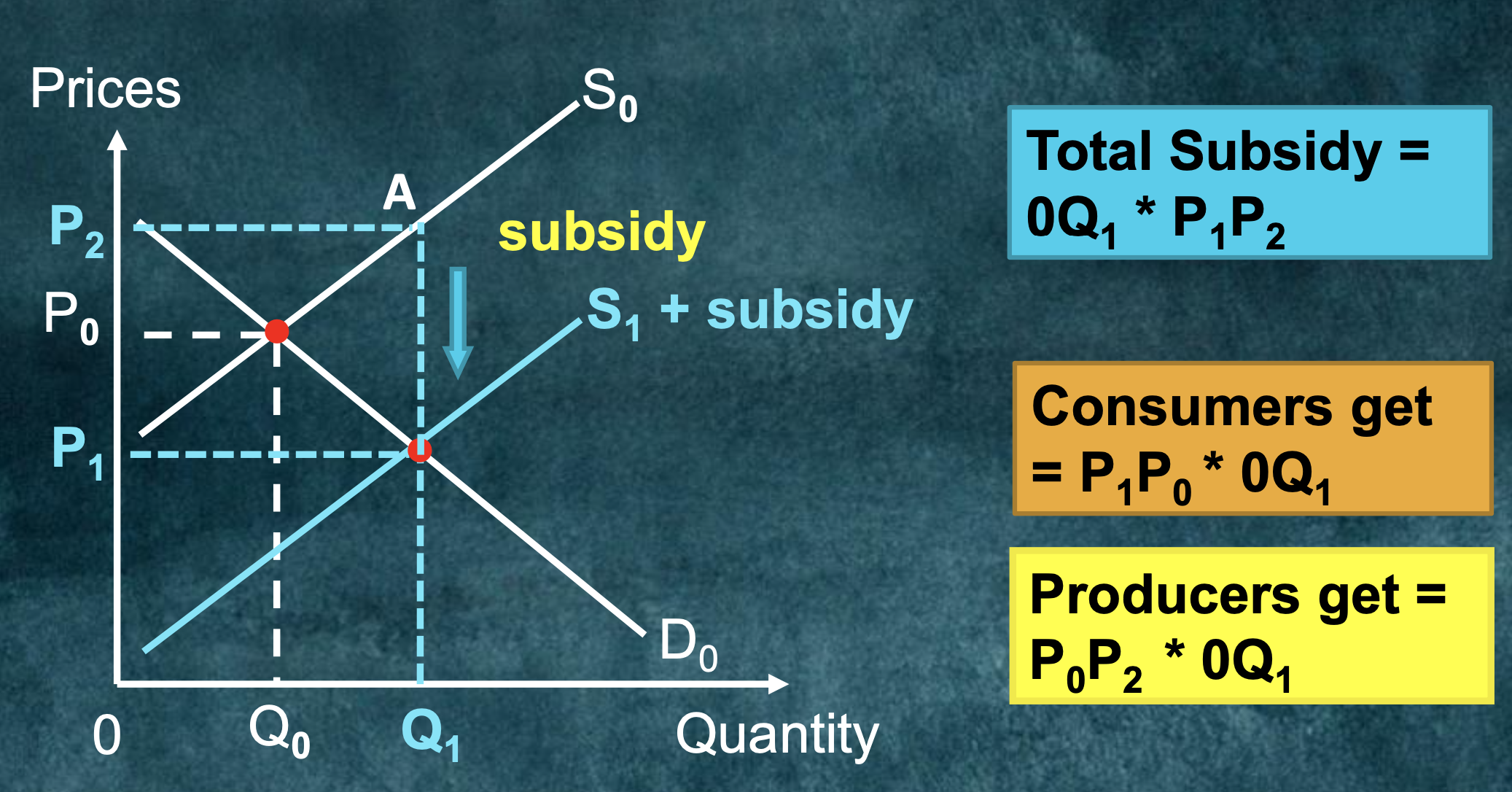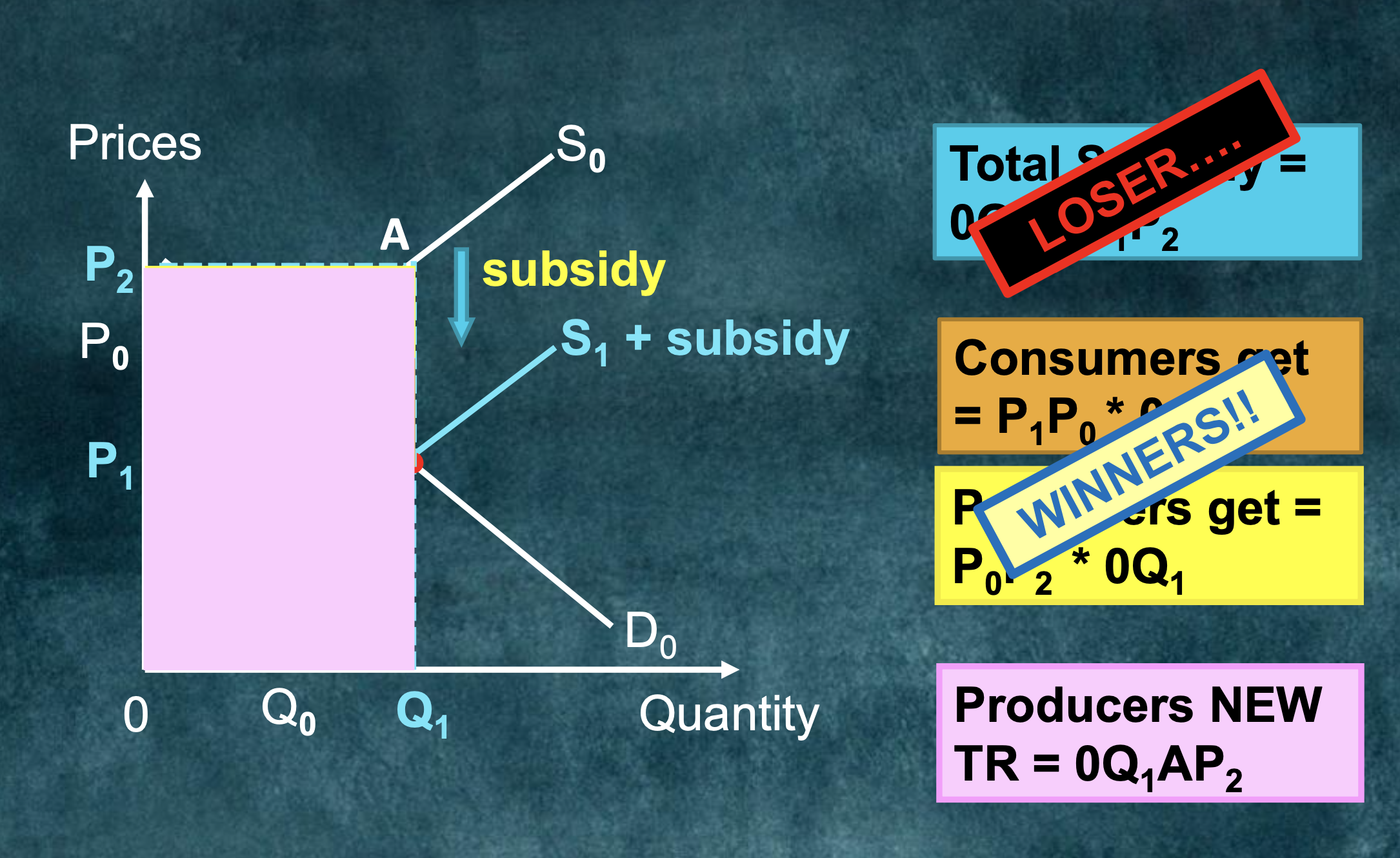Tax: Money payed to the government by firms
Types of Tax
- Direct tax
- Income/wealth tax
- Paid by households or firms directly to the government
- Personal income tax
- Corporate tax
- Income/wealth tax
- Indirect tax
- Tax on Goods/Services
- Paid indirectly to the government via the sellers of the good
- Taxed on profit, not revenue
- Specific tax
- Ad valorem tax
- Example is General Sales Tax (GST)
- Tax on Goods/Services
Indirect Tax
- Shifts the supply curve up by the amount of tax imposed
Specific Tax
- Good or service is taxed a fixed amount per unit
- e.g. $5 per kg
- Hence, tax per unit of the good is the same regardless the price of the good
- Specific tax imposes a parallel shift (of the supply curve) upwards by the full amount of the tax
Ad Valorem Tax*
- Good or service is taxed a percentage based on the value of the product
- e.g. 7% GST
- Hence, the higher the price of the good, the higher the tax per unit of the good will be
- Pivots the supply curve upwards, i.e. skewed upwards
Taxes on a demand and supply curve only affects the supply curve
Effects of Taxation
- Impact of a tax
- Falls on the person on whom the tax is first levied
- i.e., seller gets it first
- Incidence******* of a tax
- Refers to the eventual distribution of the tax burden (i.e., who ultimately bears the tax)
Example:*
- Government levies tax on producer
- Impact of tax is on producer
- Incidence of tax is shared between producer and consumer
Effects
- Increases cost of production
- Decreases supply
- Shortage at
- Increases Equilibrium Price
- Decreases Equilibrium Quantity
- Affects Consumption
When graphing Consumer/Producer Surplus: Always use original supply curve to calculate, not the new supply curve (with tax)

Incidence of Taxation

Who bears a heavier tax burden
- Depends on the relative price elasticities of demand and supply
- The more price inelastic the demand is, the greater the burden of tax on buyers
- The more price inelastic the supply is, the greater the burden of tax on sellers
- In general, the party that is relatively less responsive to price changes will bear a higher burden of the tax
Subsidies
- Payment of money to firms by the government for the purpose of reducing cost of production and increasing production
- No exchange of goods or services in return
- Sometimes known as negative taxes
- Why do governments give subsidies?
- Microeconomic objectives
- Protect incomes of farmers
- Encourage production or consumption of merit goods
- Macroeconomic objectives
- Encourage research and development
- Microeconomic objectives
- Justifying Subsidies
- Form of government intervention
- Introduced for a number of economic, social and political reasons
Imposition/Effect of Subsidy
- Supply curve shifts downwards by the full amount of the subsidy
- Total subsidy:
- Consumers get:
- Producers get:

